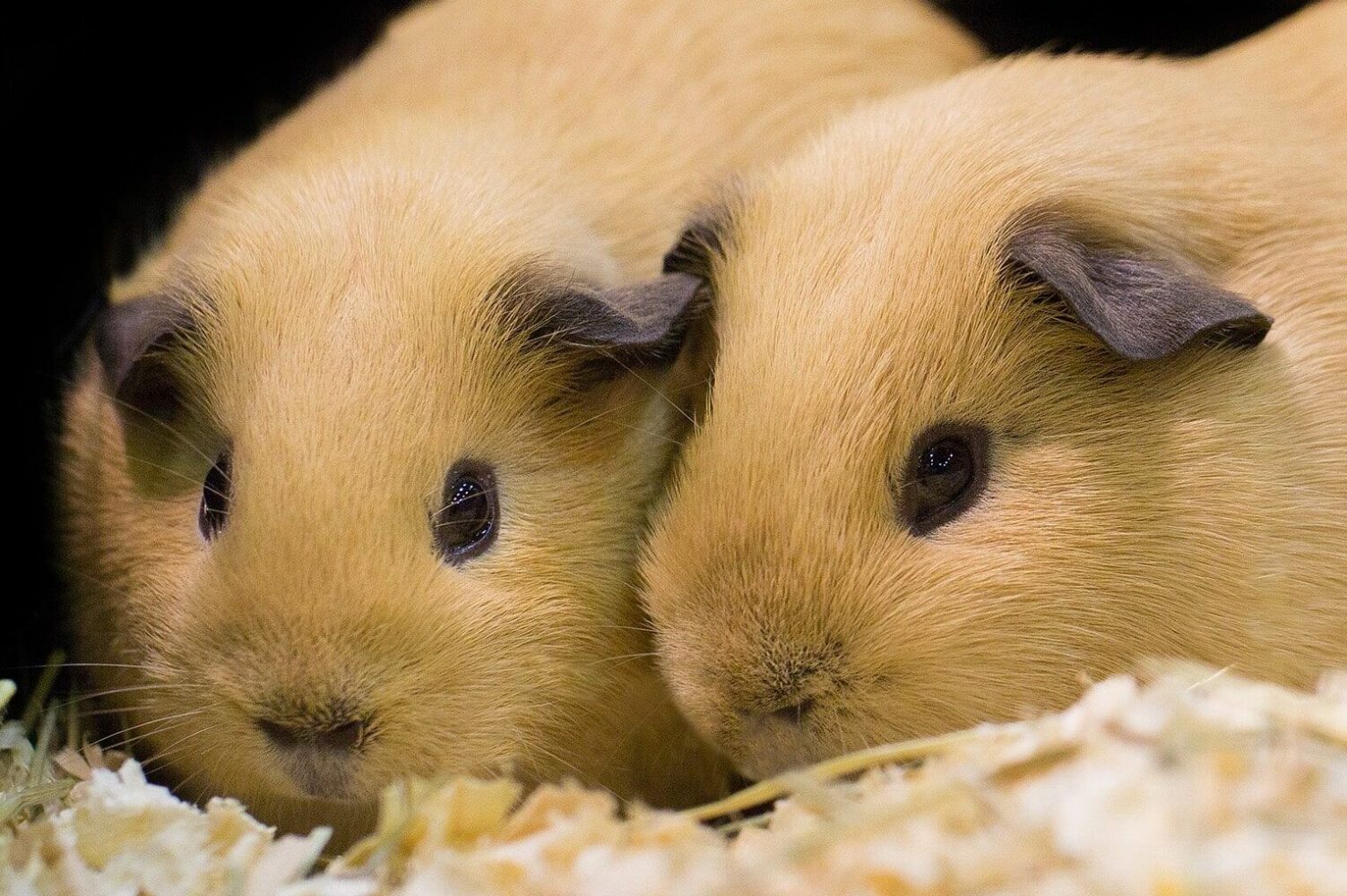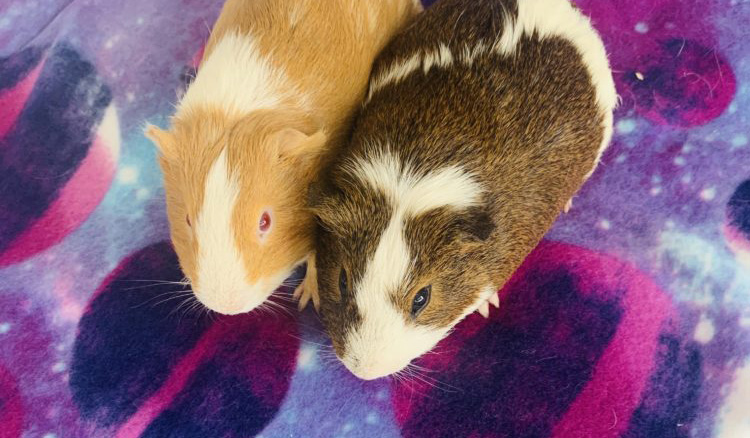How to clean your Guinea Pig’s cage and reduce the smell

We all love our Piggies, but there is a secondary reason we call them piggies 😜. It isn’t just a cute, endearing name. Let’s be honest, they can make a real mess and give their room a lovely, musky smell. There is nothing like going into their pen and being hit by a sheer wall of “wow”. Thankfully, I have a few tips and tricks to help ease this issue, clean your Guinea Pig cage or at the very least, lessen that wow factor. So let’s dive right into the crux of it.
How often do you clean a guinea pig cage?
This question is frequently asked, and it’s very important that you have the right information. You need to clean your Guinea Pig’s cage at least once a week and also spot clean it throughout the week. I want to stress how important it actually is that you keep it as clean as you can, as Guinea pigs are very susceptible to disease and infection.
This is the same as cleaning your own home. Imagine if you didn’t clean your house, wash your dishes, take the bins out, or wash your clothes for an entire week! Well, your house wouldn’t smell too amazing either, there certainly would be a sheer wall of “wow”. The same goes for a Guinea Pig’s home. You need to factor it into your weekend chores, as well as spot clean during the week. However, we will touch on that further down. Let’s get started, shall we?

How to clean your Guinea Pig’s cage so that it doesn’t smell
Ok, so you know you need to clean the cage, but you’re probably wondering what & how you should clean it? Well, we have jotted down a few points below to help guide you through the process.
- Since this is the “once a week at least” clean, it needs to be the full clean of the cage. When we mean a full clean, we do not mean just spot cleaning. So first, make sure you have enough time to start and finish this in one go 🙂 That’s the first point.
- We strongly suggest removing the Guinea Pig/s from the cage.
- Now that you have a good amount of time to spare and no piggie in the cage, you will need to empty, wash, and put new material in your litter trays (if you have them). Then, remove all toys, cage accessories, food bowls, and any other items that are in the way of getting to the good stuff.
- Clean/change the current material you use for bedding; be it a cage liner, hay, newspaper, or something else.
- For fleece cage liners; Remove any waste or loose material by either use of a vacuum or dustpan. Then take the liners outside to shake them. After that, they need a wash, so follow your fleece care instructions from where you purchased it. However, if you bought a fleece cage liner for your Guinea Pig from us, or you don’t have instructions, then follow our instructions on what to do in our quick step-by-step guide: Read our guide on how to clean a guinea pig cage with fleece.
- For hay, newspaper, or other disposable materials – you need to replace it with a fresh batch. However, before you put the new stuff in, remove all waste and bedding beforehand.
- Once you have completed the above, then wash out the bottom and sides of the cage using warm soapy water. We suggest rinsing the cage after, using a 10% white vinegar/water solution, which is 1 part white vinegar / 9 parts water.
- Now you need to let the cage dry, so you can either dry it with a clean towel or take it outside in the shade to drip dry.
- Inspect toys & accessories for any damage that could make them dangerous to your piggies.
- Wash/clean any accessories that smell bad.
- Once everything is clean, put everything back in with new fresh food and water 🙂
Why you should spot clean the cage throughout the week
As I mentioned before, a full clean is super important, but so is spot cleaning. The reason I say this is that spot cleaning will remove all the pesky stray poo’s and loose material in the cage. Which often contributes a lot to the smell factor. So by spot cleaning daily with a hand-held vacuuming or dustpan & broom, you can slow the increase of that nasty odour.
However, this works much better when you use a guinea pig cage liner, as it’s very clear what you need to remove. You need to change and clean the food and water bowls as well. As they often will pee and poop until their little hearts are content right in their own food and water bowls.
Consider your bedding options
One particularly large reason you may experience strong odours can simply come down to what type of bedding you’re using for your Guinea Pig’s cage. Some bedding options increase the rate of growth for bacteria, which will increase the amount of odor produced. These bedding options have a much more likely chance of making your Guinea Pig sick as well. This makes it super important that they replaced with a fresh batch more often. The bacteria that grow in urine and feces can be very harmful and produce large amounts of ammonia, which is very poisonous to your little piggie friend.
How to lower the risk of bacteria
So how do I fix this, you may ask? Well, even though we obviously sell them, we honestly can’t recommend them enough. Our suggestion to improve this issue is to purchase a cage liner. Before Teacup Nethies made cage liners, we bought them for our rabbits. We loved them so much; we ended up creating and designing our very own for our online guinea pig and rabbit pet store 😊.

Why we recommend fleece cage liners for your Guinea Pigs
Well, for starters, you can wash them and they’re reusable, unlike hay or wood shavings. I definitely don’t recommend trying to wash or reuse wood shavings, I can’t see that turning out great 😂. The fleece is great for absorbing urine, which means your piggies’ feet are dry, which is less likely to cause infection. A few other reasons to consider investing in fleece cage liners include:
- Fleece liners are eco-friendly, as they are made from fabric, not plastic or rubber. They are reusable, thus reducing the impact of a continual supply of other non-reusable materials.
- Cheaper in the long run; They may be an investment and a large upfront cost, but in the long run, you will save money and time buying that next bag of wood shavings (yes, we have been there ourselves).
- Look amazing and feel much nicer under your little friend’s paws
- Extra absorbent
- Helps prevent common diseases and infections
- Dust-free
- Antibacterial
- Hypoallergenic
In summary, we recommend you consider cage liners, as they are the most sanitary and comfortable choice for your Guinea Pig’s cage bedding option. Guinea pigs are very susceptible to diseases and infections, so it is important no matter which type of bedding you choose, that you provide them with a healthy living environment.
In-order to spot potential issues or health problems that your Guinea Pig may have, read this article about What you need to know about your Guinea Pigs health.
If you’re interested, you can check out our range handmade cage liners. They come in many sizes, colours and patterns that you can choose from.
Thank you for reading our blog. We hope this article has helped you in some way! We would love to hear your feedback about this article or any other topic that interests you. Additionally, if you would like to learn a little more about Guinea Pigs, we have a great new article for you to read “15 Fun & Amazing Facts About Guinea Pigs“.
